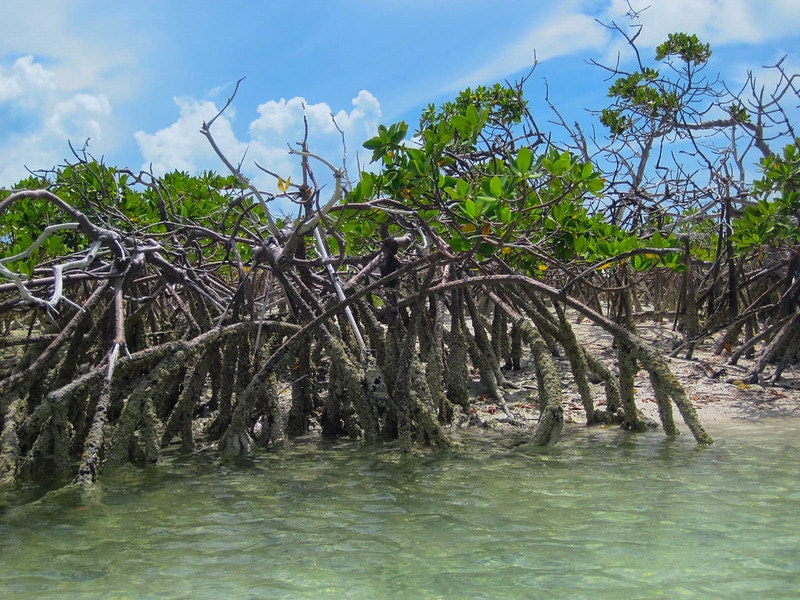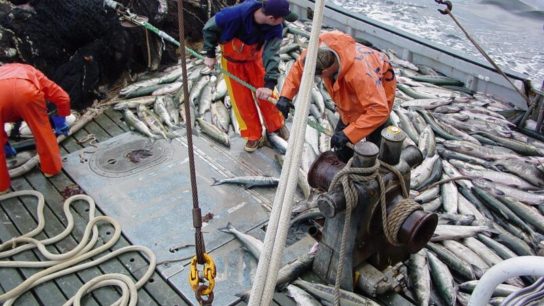Carbon credits, a method of reducing carbon dioxide emissions through corporation donations and trades, are beginning to create markets in oceans, in addition to traditional land-based projects. This expansion, referred to as “blue carbon credits” has profound implications for both the environment and global business. Blue carbon credits can lead to reduced global warming and healthier coastal ecosystems while increasing economic profit for corporations around the world.
—-
Carbon credits are voluntary vouchers that allow companies to offset carbon emissions by funding projects that sequester carbon or prevent its release in the atmosphere. One carbon credit is equivalent to the release of one ton of carbon dioxide into the atmosphere.
Companies fund restoration projects and in turn receive equivalent credits to the amount of carbon removed from the atmosphere, thus making their company initiatives “carbon neutral.” Companies may either use their carbon credits to release emissions while remaining carbon neutral or they may sell carbon credits to other companies looking to reduce greenhouse emissions. There is thus incentive to reduce greenhouse emissions and sell unused carbon credits to other companies for profit.
If you want to learn more about carbon credits, check out this article next: What are Carbon Credits and How Do They Work?
Verra, a non profit headquartered in Washington, DC, was founded in 2005 to regulate the carbon credit market. Formerly known as the Voluntary Carbon Standard, Verra accredits any projects that wish to join the carbon credit market. Projects must meet a core set of Verra standards, agree to independent auditing throughout the project and publicly register so that the general public can see progress and results. Verra is essentially the rule book and referee of the carbon credit world.
There are four main types of carbon credit land projects: forestry and conservation, renewable energy, community projects and waste to energy projects. A current forestry and conservation project credited by Verra is the reforestation and conservation of a mangrove swamp in Sinaloa, Mexico. It’s estimated that the project reduces 3,123,863 tons of atmospheric carbon each year through plantation of new trees and maintenance of existing plants. An example of a renewable energy project is currently underway in Cox’s Bazar, Bangladesh. The project focuses on using renewable solar photovoltaic technology to decrease carbon emissions by 32 791 tons per year.
What are Blue Carbon Credits?
Until April this year, Verra had only had applications for land based projects. However, the Virginia Nature Conservancy, a nonprofit organisation focused on climate change, partnered with the University of Virginia and the Virginia Institute of Marine Sciences to plant over 70 million seeds in bays off Virginia’s coasts. The project is now applying for accreditation through Verra to sell carbon credits to large scale corporations, making it the first seagrass project in the world to do so, and thus introducing the concept of “Blue carbon credits.”
Blue carbon credits mostly focus on restoration and maintenance of mangroves, seagrasses and salt marshes to sequester atmospheric carbon dioxide emissions. Blue carbon credits show great potential for mitigating climate change through their exceptional ability to store carbon dioxide. Mangroves are able to sequester up to ten times the amount of carbon than land counterparts, and are able to store the carbon for 3-5x longer.
85% of global carbon dioxide emissions pass through oceans at some point, making oceans and coastal regions prime locations for carbon sequestering. Furthermore, while coastal regions only account for 2% of total ocean area, they make up over 50% of all ocean carbon stores, leading scientists to focus on coastal restoration projects. Investing in plantation of mangroves, small trees that grow on coastal borders, can greatly decrease atmospheric greenhouse gas emissions. Taking it a step further, having companies fund the projects that plant mangroves allows for corporations to market themselves as carbon neutral, creates a market for trade amongst the environmentally conscious and increases capital to continue globally sustainable projects.
In addition to voluntary carbon credit markets, there is a second type of carbon credit market that businesses may be a part of called “cap-and-trade” markets. In cap-and-trade markets, governments place limits on the amount of greenhouse gases that businesses are legally allowed to release into the atmosphere. If a business reduces emissions and does not emit up to its limit, the company is able to sell “left over” unused emissions to other businesses who may be struggling to stay below their cap. Several states in the United States currently operate under cap-and-trade markets, which are mandatory, unlike the voluntary methods through Verra. With the expansion of blue carbon credits, businesses may be able to fund voluntary products to further increase yearly profits through sold credits.
You might also like: Blue Carbon Projects Can Be Instrumental in Combating Climate Change
Criticisms of Carbon Credits
There are several critiques of carbon credits. The first is that carbon credits are intended to represent carbon sequestration that would have otherwise not happened if a project were not funded by a company. For a corporation to be truly carbon neutral, their donation would have to directly financially fuel a project. If the project could be fuelled without company donation, critics claim carbon credits give corporations a false sense of sustainability and a free pass to emit greenhouse gases into the atmosphere.
The second major critique of carbon credits is that several companies have labeled themselves as carbon neutral and have emitted extra greenhouse gases using carbon credits that were obtained up to a decade prior. Some claim this leads to an inaccurate representation of true carbon emission and sequestration. “The market contains hundreds of millions of tons of poor quality credits” states Mark Maslin of the department of geography at the University of London, calling these situations as use of “outdated credits.”
The blue carbon credit market has great potential for both economic growth and increased sustainability, but it must be regulated closely and avoid the critiques and pitfalls of some of the land-based carbon credits. Almost all researchers agree that simply buying and selling carbon credits is not enough, and that corporations must also be actively trying to reduce production emissions. However, Jennifer Howard, marine climate change director at Conservation International, points out “the carbon credit market is good, because the private sector has all the money. We need long-term sustainable finance to keep our projects going.”
Featured image: Flickr
You might also like: Carbon Offset Schemes Only Make Sense With Mixed-Species Forests


















